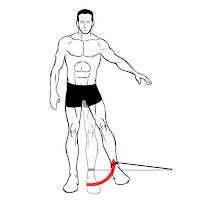Hip or Knee Osteoarthritis (OA) Exercises
While at the 2019 American Physical Therapy Association’s (APTA) Combined Sections Meeting (CSM) conference, I had the opportunity to attend Urban Poling’s ACTIVATOR® Course where founder Mandy Shintani presented the foundations and different techniques of using their poles as a replacement to canes, walkers and crutches. I primarily wanted to attend the course to see how physical therapists responded to the use of the poles as PT-Helper recently added exercises using the ACTIVATOR poles into our library.
The therapists in attendance were very interested and attentive despite having spent a full day at CSM. During one of the discussions, Mandy mentioned that Canada had implemented the GLA:D™ Osteoarthritis Exercise Program where 1 in 4 people in Canada have osteoarthritis. As a non-clinician and ex-patient, I am always interested in learning about new exercise programs that we can add to the PT-Helper library to enable therapists to prescribe exercises to their patients.
Further research revealed that the GLA:D program (Good Life with Arthritis: Denmark) is an educational and exercise program developed in Denmark which showed up to 30% pain relief for people with hip or knee osteoarthritis symptoms. We were able to identify some exercises within the GLA:D program at the TREK Translate Research Evidence and Knowledge website.
Many of the exercises were already available within the PT-Helper exercise library. We have added a few exercises such as Knee Extension Resisted and Step-Down/Step-Up (Forward). We have also added the metatags “GLA:D” to all the related exercises so that clinicians can search the exercise library in our exercise prescription web-service CONNECT with “GLA:D” to quickly and easily view and select these exercises.
Exercises with PT-Helper that are metataged with GLA:D are:
- Bridge on Ball – Lie on your back with both feet on top of an exercise ball. Engage your abdominal muscle then raise your hips up trying to make a straight line from shoulders to feet. Hold. Slowly lower your hips back to the ground. Repeat.
- Chair Rise – Sit on the edge of a chair with both feet flat on the floor. Stand upright without using your hands. Return back to the seated position using the “nose over toes” posture, leaning forward so that your nose is over your toes while slowly bending your knees.
- Chair Rise With Support – Sit on a chair which is not too low. Place the feet behind the knees. Lean forward over your knees. Push off with one or both hands as recommended by your therapist to stand up. Sit back down. Repeat.
- Hip Abduction – Resisted – Secure the band to a stationary point, place both feet inside the band. Keep both thighs tight. Facing perpendicular to the attached point of the band, kick out to the side keeping toes straight ahead and both legs straight, then return to starting point.
- Hip Adduction – Resisted – Secure the band to a stationary point, place inside foot in the band. Keep both thighs tight. Step far enough away to create resistance, allow band to take inside leg in, then pull in towards your standing leg. Keep both legs straight and try to keep moving foot off the ground.
- Knee Extension Resisted – While sitting in a chair, attach a band around the back leg of the chair and wrap the other end around your foot. Make sure that there is tension in the band while at rest. Raise your leg by straightening your knee fully while contracting your quad. Slowly lower your leg. Weights may be placed around your ankle. Repeat
- Step-Down/Step-Up – Stand on a step or stool with one leg, the other leg hanging off the end of the step or stool. Slowly bend the leg on the step, lowering the other foot to the floor. Return to the starting position by straightening your front leg.
- Step-Down/Step-Up Forward – Stand on a step or stool with both legs, facing the edge of the step or stool. Slowly bend one leg, lowering the other foot to the floor in front of you. Return to the starting position by straightening your rear leg.
Reminder: Please consult your physician or physical therapist before engaging in any physical activity and stop if you experience pain or discomfort.
You can find these exercises (and many more) in the Geriatric category in the PT-Helper mobile app to add to your Favorites which allows you to customize each exercise’s repetitions, sets, and hold time. You can also set up 3 daily reminders to notify you when to do your exercises.
Start your Free 30-day Trial of the PT-Helper CONNECT service for physical therapists and other wellness professional, to prescribe Home Exercise Programs.
Download the PT-Helper mobile app for patients and exercise enthusiasts to create your exercise program.
















